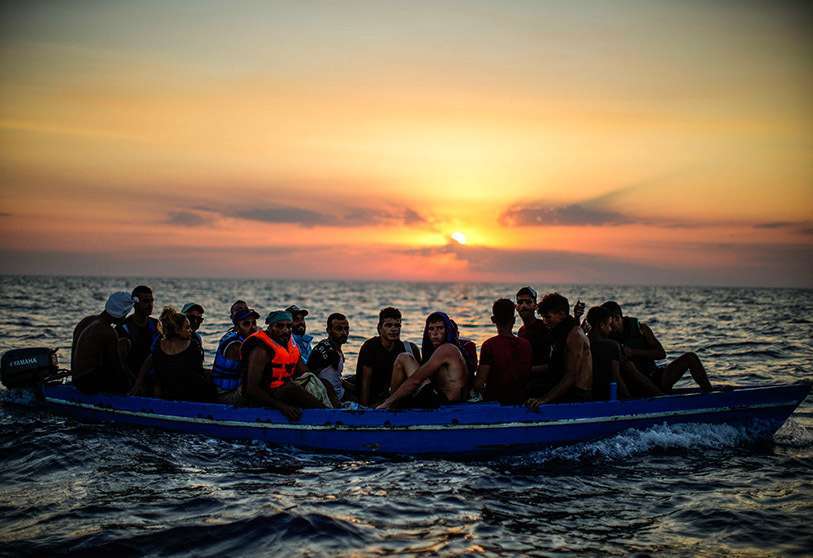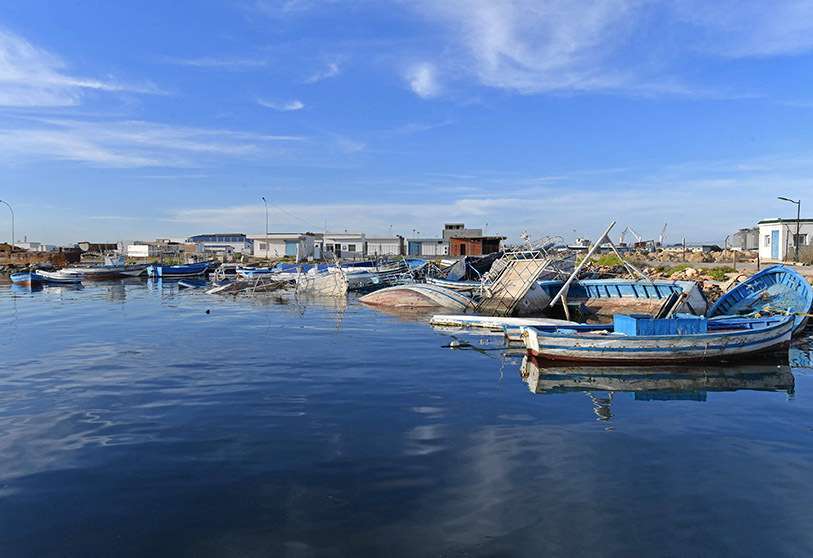Tunisian migrants: looking for land alternatives to reach Europe

It is no longer just unemployed young people in search of a better future. The Covid-19 pandemic, the energy and food consequences of the war in Ukraine, unemployment and galloping inflation have changed the profile of Tunisian migrants forced to leave their country. Entire families with women, minors and babies now struggle to reach European borders - sea or land - taking on the astronomical sums demanded by gangs and organised human smuggling groups.
However, the frequent Mediterranean tragedies that have claimed the lives of hundreds of people have led Tunisian migrants to seek new, safer routes to Europe. A list that includes the famous "Balkan Route". A land-based alternative to migratory movements that began to be called this a few years ago, when it became the most common way for North African, Asian and Middle Eastern exiles to cross the borders of the EU-27.

On this route, Turkey is the starting point for three different routes that organise and direct people smuggling networks: one through the Turkish Bosporus Strait, through Bulgaria, to Serbia or Romania, and finally to Hungary or Croatia; and two others that use Greek territory as a prelude to entry into the EU, via North Macedonia and Serbia, or Albania, Montenegro and Bosnia and Herzegovina. In any case, the Balkan Route was officially interrupted in 2016, although this did not prevent migratory movements from finding new alternatives that force them to spend days without water, walking, camping in the middle of forests, and fleeing from border security forces.
According to data from the European Border and Coast Guard Agency (Frontex), nearly 150,000 people have entered Europe via this route since the beginning of the year. Four times more than the figures recorded in the same period in 2021. This number includes more than 15,000 Tunisian migrants who made use of the Turkish-Serbian alternative, according to statistics from the Tunisian Forum for Economic and Social Rights. Roughly the same number of Tunisians reached Italian shores, less than 200 kilometres away, via the Mediterranean Sea in the same period of time.

But these new alternatives, while seemingly safer than the sea routes - which have so far left more than 500 dead and missing - are not without dangers. The harsh conditions of the journey, the risk of physical and institutional violence from smugglers' networks and European countries' security forces, and the possibility of being deported back to the territory of origin are just some of the scenarios migrants face.
"The economic and social causes must first be addressed to eliminate the phenomenon of irregular migration before relying solely on a security approach", Tunisian President Kais Saied tried to defend himself at the inauguration of the Tunis Naval Museum during the commemoration of the 59th anniversary of Evacuation Day. This is despite complaints by more than twenty Tunisian NGOs against the Tunisian authorities, who they accuse of not having a national migration strategy.
As if the number of nationals aspiring to leave the country - and dreaming of reaching Europe - were not enough, many other North Africans and sub-Saharan Africans who share the same goals are also on Tunisian territory, sometimes stuck in the middle of their journey, sometimes waiting to embark on it.

In this scenario, the EU has focused its efforts on the border situation in Serbia, which Margaritis Schinas, vice-president of the European Commission, has said faces a "post-pandemic boom" of irregular immigration. Brussels has therefore granted the Balkan country financial support of 36 million euros - which is part of "a larger financial package of 57 million euros for migration management" - to address the issue.
At the same time, Belgrade has pledged to align its visa policy with that of the EU-27 "to ensure that the visa regime it maintains with third countries is not abused", Schinas said, mentioning Burundi, India and Tunisia. Since the beginning of the migration crisis in 2015, more than 1.5 million people of 50 different nationalities have crossed the country, and asylum centres have already registered more than 10 million overnight stays.

The sinking of a boat carrying 18 people, mostly teenagers and minors - including a baby - on 21 September is just one more example of the migration tragedies that fill the news on the Mediterranean. The shipwreck took place off the coast of the southern town of Zarzis, and to date, with the exception of eight bodies found by fishermen in the area, the migrants on the boat are still missing.
Meanwhile, the families of the young Tunisians have been protesting for weeks against the Tunisian state, which they accuse of not doing enough to find their children and relatives. As has already happened on other occasions, the families could have to live, from now on, with the uncertainty of not knowing if their loved ones have died.








